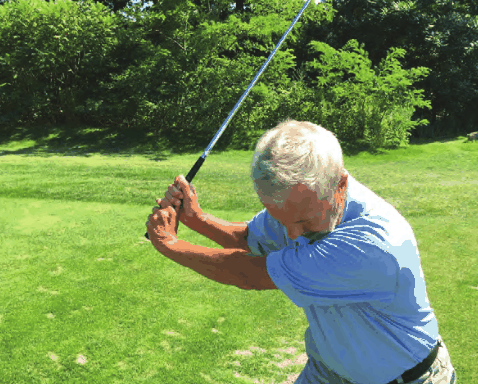Of all the aspects of teaching the swing, one stands out for its lack of attention…and ironically, most accomplished teachers consider it the most important part of the swing. It’s the transition, the change of directions from the backswing to the forward swing, and a lot of misinformation and trepidation in teaching it exists among the golf instruction world.
One reason for this may be the difficulty in teaching it. Performed correctly, it’s a highly athletic move and the basis of everything that happens from that moment on. Before the move can be taught, the golfer must be in the correct position to execute it; otherwise, the teacher will be teaching out of sequence. And let’s explain that concept before we go further.
Teaching out of sequence means addressing an aspect of the swing that happens after the true root cause of a problem. A simple example would be alignment. A golfer who is lined up with a too-closed stance would have to make some sort of compensating move in order for the ball to find its target, such as hitting a hook or coming over the top so the swing path is towards the intended target. A teacher who fails to change the stance and attempts to teach the student from this setup position will be working on the effects of the root cause, and is therefore teaching out of sequence.
Strictly speaking, the top of the backswing is a position within transition, but for teaching purposes, we will consider it as coming before transition. There are several aspects that must be fundamentally correct before teaching the transition can be done:
- A proper coil, with the lower body having responded to the upper body’s turn
- Weight (or pressure) primarily on the inside of the back foot
- Hips having turned, not swayed, with only a minimum of lateral motion allowed
- Lead foot on the ground or heel slightly raised; no thrusting of knee towards the trail leg
- Spine angle in or near original address position (provided it was correct to begin with)
- Swing on-plane, with lead arm on or near same angle as shaft plane at address*
- Clubface in a square position**
Copyright © 2023 United States Golf Teachers Federation, All Rights Reserved
200 S. Indian River Drive, Suite #206, Fort Pierce, FL 34950
772-88-USGTF or 772-595-6490 - www.usgtf.com
200 S. Indian River Drive, Suite #206, Fort Pierce, FL 34950
772-88-USGTF or 772-595-6490 - www.usgtf.com

